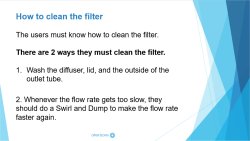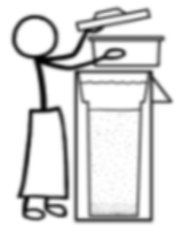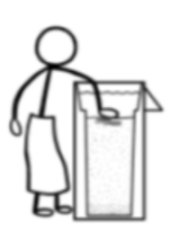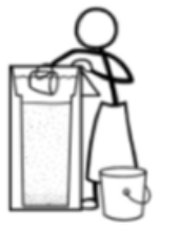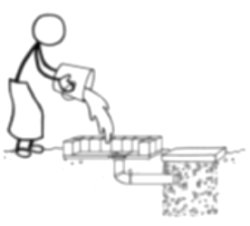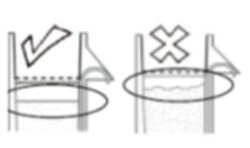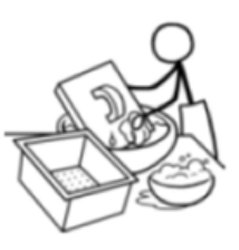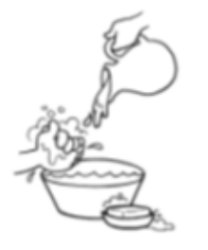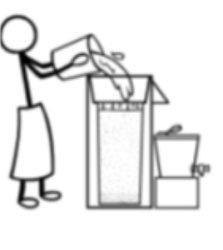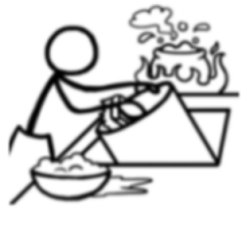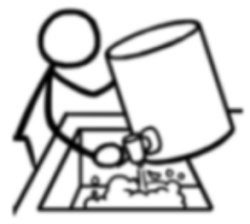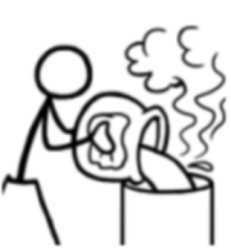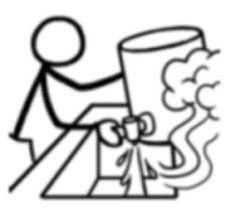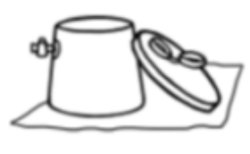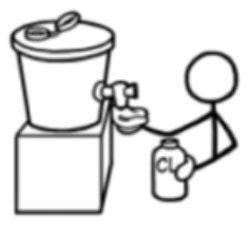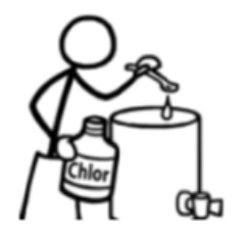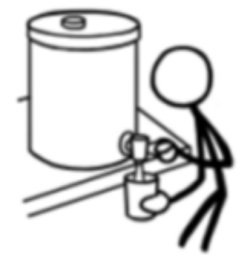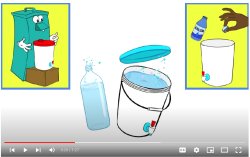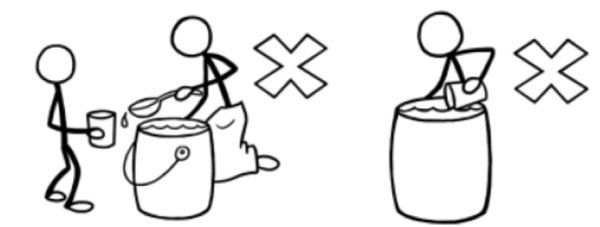
|
 Contact UsEen Druppeltje Hoop
Groeien en GaanDrop of Hope School ProjectKinder EvangelisatieKids Discipleship TrainingAfrican Countries SelectedCARICOM Countries SelectedHumanitarian ArmUCT Leerplan |
thuis >>nstallation>> maintenance>> flush the filter>> clean the filter Een Druppeltje Hoop - Clean the Filter Embedded Microsoft Office presentation, powered by Office.
Educating the user how to Clean the Filter The users must know how to clean the filter. There are 2 ways they must clean the filter. • Wash the diffuser, lid, and the outside of the outlet tube. • Whenever the flow rate gets too slow, they should do a Swirl and Dump to make the flow rate faster again. Cleaning the parts of the filter The diffuser collects dirt and large particles that are in the water. It may get very dirty. The dirt will not harm the drinking water, since the water is filtered after it touches the diffuser. But it is a good idea to clean the diffuser. Cleaning the dirt off the diffuser will help keep the dirt from clogging the sand. It will help keep the flow rate from getting too slow. It is also good to wash the lid. If the family stores anything on top of the lid, it should be clean. Also, it will look nicer if it is clean. • Once a week, wash the diffuser and lid in soapy water. Then rinse them in clear water. • You do not have to use safe, filtered water to wash the diffuser and lid. But the water should be as clean and clear as possible. • If you don't want to put the lid into the water, you can wipe it with a clean, wet cloth. |
|
It is important to keep the outlet tube clean. Sometimes the outside of the tube can get dirty. This may make the drinking water dirty again. This is one reason the water should be disinfected after being filtered.
• Once a week, wipe the outside of the outlet tube. • Use a cloth with chlorine. Let the tube air-dry • If you do not have chlorine or bleach, use a wet soapy cloth • Then use a clean, wet cloth to rinse off the soap. Use filtered water to clean the outlet tube . The user should NEVER put chlorine inside the outlet pipe or into the top of the filter! Swirl and Dump
Safe water storage Safe storage means keeping the water from getting contaminated again. If hands, dippers, cups, or anything else touch the water, it will become unsafe to drink again. Open buckets are not safe storage since anything could fall into the bucket and contaminate the water.
Using your treated water It is important to protect your treated water and keep it from getting dirty again. It is best if the safe storage container has a tap. If there is no tap, pour the water out. You should be able to get the water out of the safe storage container without using a cup or dipper.
What NOT to do! Cups and dippers can be dirty from sitting on the counter or table, or from people touching them with their hands. Dirt and pathogens from hands, a cup or dipper will go into the water. Then the water may make you sick when you drink it. Use the filtered water as soon as possible . Try to use it all within 1 day. This reduces the change of recontamination. The first water poured through the filter in the morning will be the best quality (because it has sat in the filter overnight). Save this water for drinking. Use the water that you pour through the filter later in the day for other uses like cooking and washing. You can disinfect it by using chlorine or boiling. Disinfection will kill any pathogens left in the water after filtration. Adding chlorine to your filtered water will also protect it against being contaminated again- the chlorine will kill any new pathogens that get into the water while it is being stored. Download Handout #15 - English Educating the user to Clean the Filter Follow-Up with the User It is important to visit the users after they start using the filter. People forget the details about how to use and clean the filter, so you will need to remind them. This will be covered in our final Handout. Finally the Follow Up
|
| Copyright © 2024 www.UnitedCaribbean.com. All rights reserved. Disclaimer Click to Contact us |
